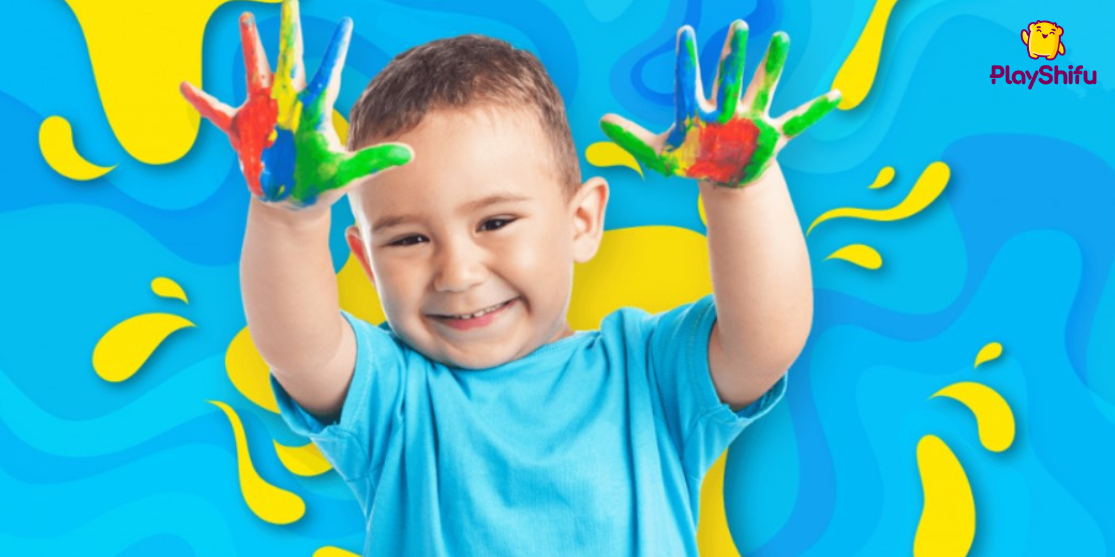Would you believe us if we said that your baby is a born artist?
Let us explain, but with a quick question.
What is your fondest memory of their childhood?
You are probably reminiscing about all the colorful handprints they left on the walls or the stories they cooked up when you asked them about the broken vase.
Doesn’t it seem just yesterday when they were making the beautiful Christmas card for grandpa and grandma? Oh, and don’t forget the yummy cake they were helping you bake for Ron’s birthday party!
They have a knack for art, don’t they?
We are all born with artistic abilities and indulging in different activities from early childhood helps in grooming them.
The A(rt) in STEAM:
Art is about colours, creativity, laughter, freedom, and happiness. Kids get a chance to express their emotions through art and gives them the license to be creative.
Art also helps kids in building self-esteem, empathy, and critical thinking. Art finds its place in all walks of life. And hence, it is an integral part of STEAM.
Here are some super easy and fun ART activities based on the STEAM curriculum that you could indulge your kids with.
1. Who am I?
‘Who am I’ is an activity that involves a little bit of storytelling, painting, craft, and lots of fun. Here’s how it’s done:
- You need some easy to find art supplies including paper, pencils, and crayons
- Ask them to draw a portrait of themselves and describe their features (eyes, hair, skin, height, weight), their likes and dislikes, etc. on a piece of paper
- Similarly, you can ask them to draw a portrait of what they would look like next year or a picture of you with a small description
The fun drawings help develop hand-eye coordination, motor skills, creativity, and attention to detail. The descriptions will help your kid build vocabulary and general writing organization.
Image Source: iSLCollective
Tip: Encourage the use of adjectives when they write descriptions. Soft for voice, silky for hair, etc.
2. The language of the month
‘The Language of the Month’ tries to get kids accustomed to speaking and understanding multiple languages. All you will need is a book with basics of different languages.
- Let your kid pick a language of their liking, say Spanish
- Start by practicing simple greeting and numbers such as Hola (Spanish for Hi) and Uno (Spanish for One), and make it a habit of greeting people and counting in Spanish
- Name animals, plants, flowers, appliances, in Spanish. In no time, you will be having small conversations in Spanish!
Kids are very quick learners. They pick up things faster and retain their memories longer too.
Tip: Try to read stories or poems in the chosen language. You can also listen to songs or watch movies in your chosen language. This helps kids visualize words and remember their meaning.
3. Little creator
Did you know that ‘Braille’ was developed by Louis Braille when he was 15 and Benjamin Franklin designed ‘Swim Fins’ when he was 11?
There are many other creations by kids that went on to be a part of our lives – earmuffs, trampoline, Pringle’s hook, magnetic locker wallpaper, etc.
We firmly believe that kids have better answers to everyday problems. And by providing them with the support they need, they can devise the best solutions.
‘Little Creator,’ as the name suggests, is an activity which gives your kids more hands-on time for being creative. Here’s how it goes:
- Give your kids a task to list down things they regularly use but aren’t pleased with. Some examples are potty seats, soaps, shampoo bottles, pizza boxes, toys, etc.
- Ask them why they don’t like these things, and how they would propose to redesign
- Note down all the ideas. Brainstorm with them. And give them a chance to work their ideas
Tip: Create a “creative corner” in the study or garage where kids spend time being creative.
The importance of art shouldn’t be overlooked. Art is freedom. A child’s mind is expanding and fragile, and restricting its growth by limiting the possibilities can leave long-lasting scars and missed opportunities that sometimes even time can’t heal.
We sincerely hope that this small effort to highlight the significance of art resonated with you. We would love to know your viewpoints on art and STEAM curriculum. We are waiting for your comments and emails.
We have also compiled some amazing Math activities, and we are sure that you will love doing them with your kids. Are you ready for fun with numbers?





